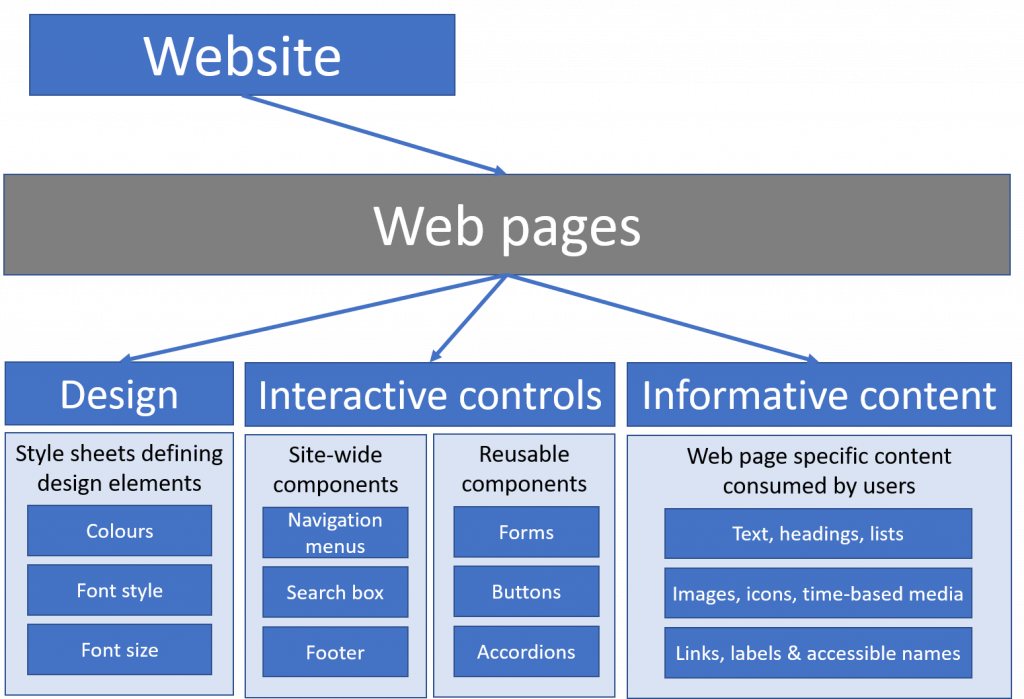This may sound like a simple question, but it is an important question when you are considering if a website meets web accessibility regulations. The new regulations in the UK and Europe require each website to have an accessibility statement and, due to the age of the website, sites owned by the same organisation may have a different timeline for complying with the regulations.
The W3C Web Accessibility Initiative Website Accessibility Conformance Evaluation Methodology (WCAG-EM) defines a website as:
A coherent collection of one or more related web pages that together provide common use or functionality. It includes static web pages, dynamically generated web pages, and mobile websites and applications
Website Accessibility Conformance Evaluation Methodology (WCAG-EM) 1.0 (2014)
Therefore it is important to consider what is a website from a usability perspective – that is if a collection of web pages provide a common use, such as a VLE module or course section, this could be considered a separate website. Websites consist of site-wide elements, such as design aspects and interactive controls, as well as informative content on each page.
So who is responsible for the accessibility of a website?
Web Accessibility conformance is measured by evaluating whole web pages or complete processes. According the W3C WCAG2.1 standard, a website can only say it meets an accessibility standard if an appropriate sample of pages and processes have been tested as compliant.

If a website consists of a collection of web pages, it can be difficult to say who is responsible for the accessibility of the site as a whole let alone each page. There are many different elements that make up each page, each of which can impact the site’s overall accessibility. A web page can be broken down into its design, interactive controls and informative content.
- Design defines aspects such as colours, font style and font size. This would usually be created by a designer and overseen by teams such as marketing and communication.
- Controls maybe site wide such as navigation menus, search box and footer. Or controls may be reusable components such as forms, buttons and accordions. These are technical aspects of web pages that are created and maintained by web developers.
- Informative content is the content consumed by the person reading and accessing the websites. This can be text with structural elements such as headings and lists. It can also include media such as images, icons and videos. There will also be some important accessibility content such as alt-text on images, captions on videos and accessible labels on buttons and interactive controls. Informative content may also be downloadable documents or external content that is added to or embedded within the page. This type of content can be created by a wide range of staff and includes teaching material.
Therefore it is important that all staff who are responsible for different aspects of a website or create any content that will end up on a website are aware of digital accessibility requirements.
